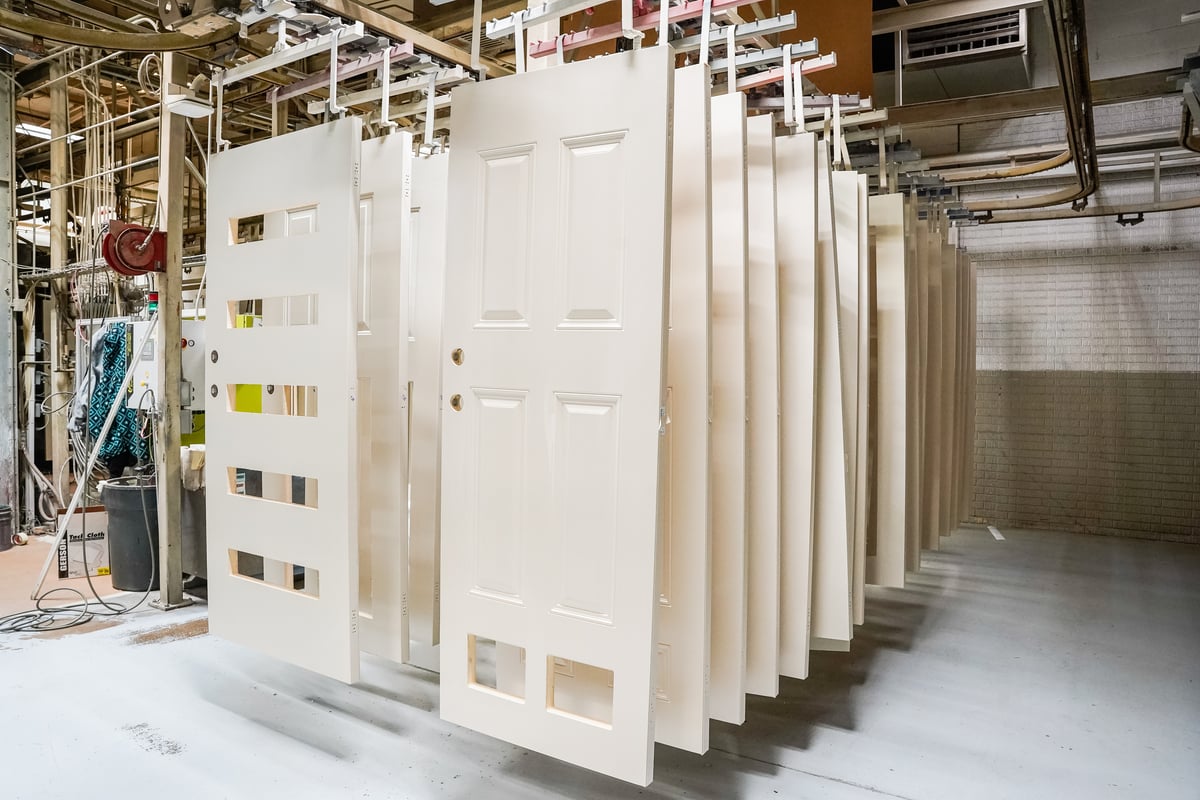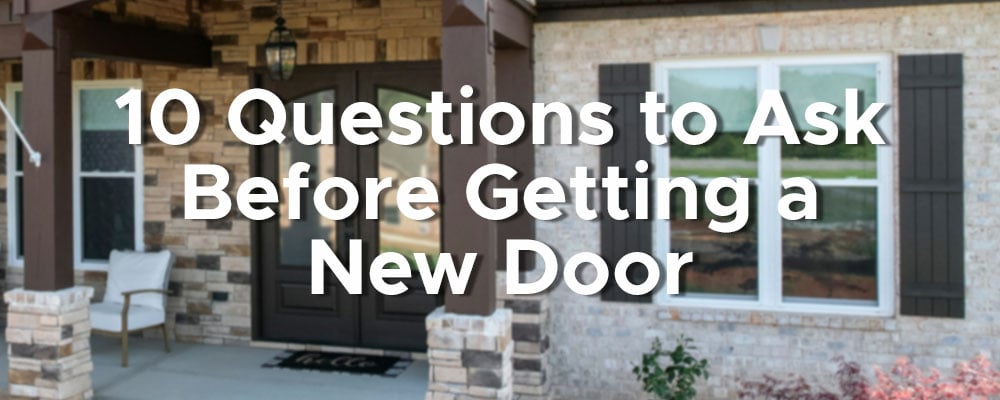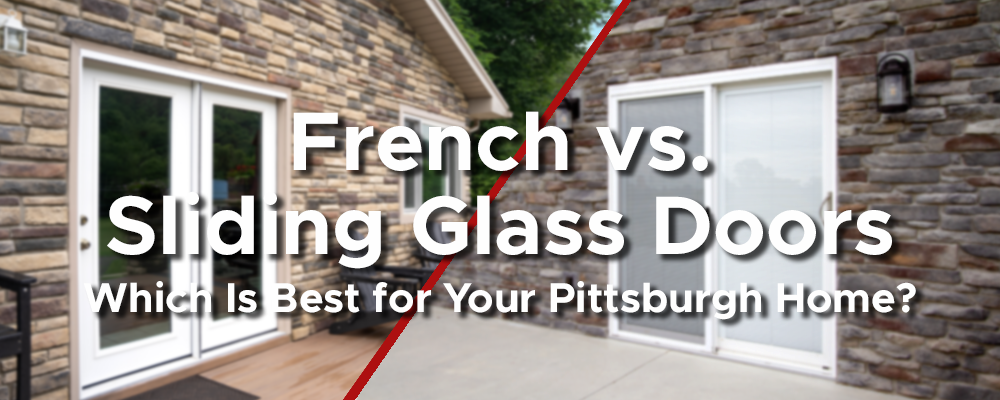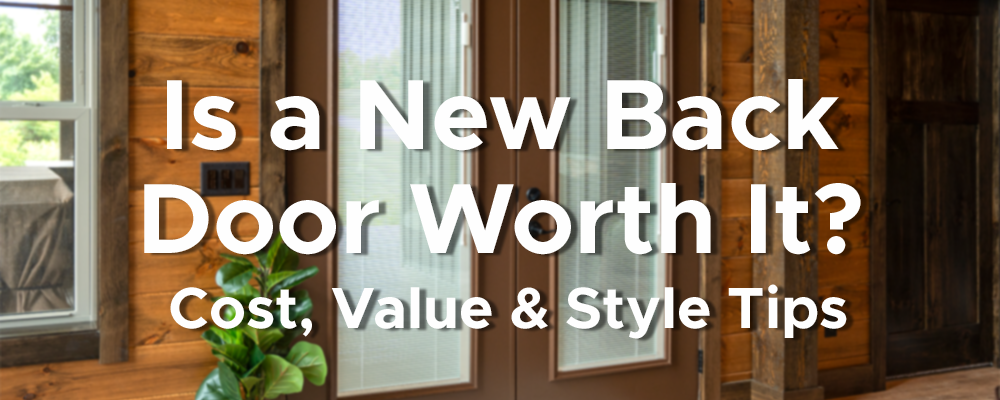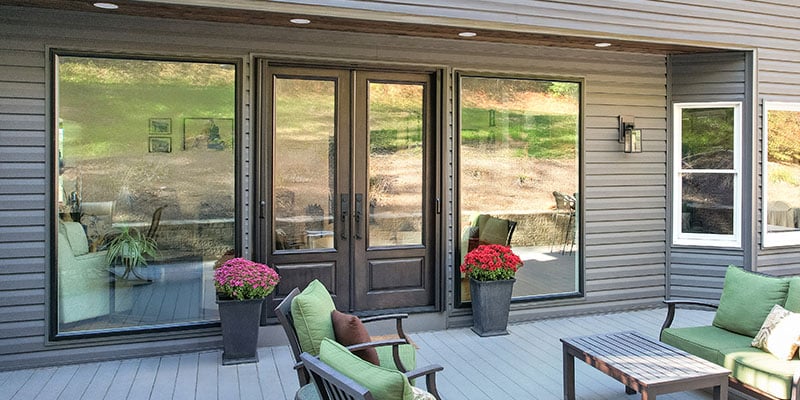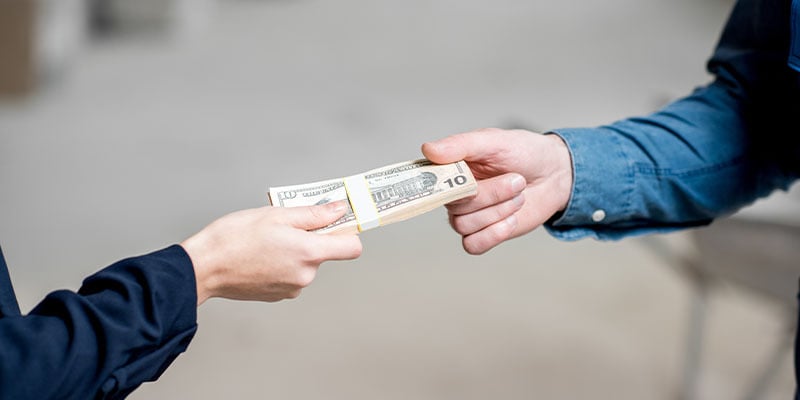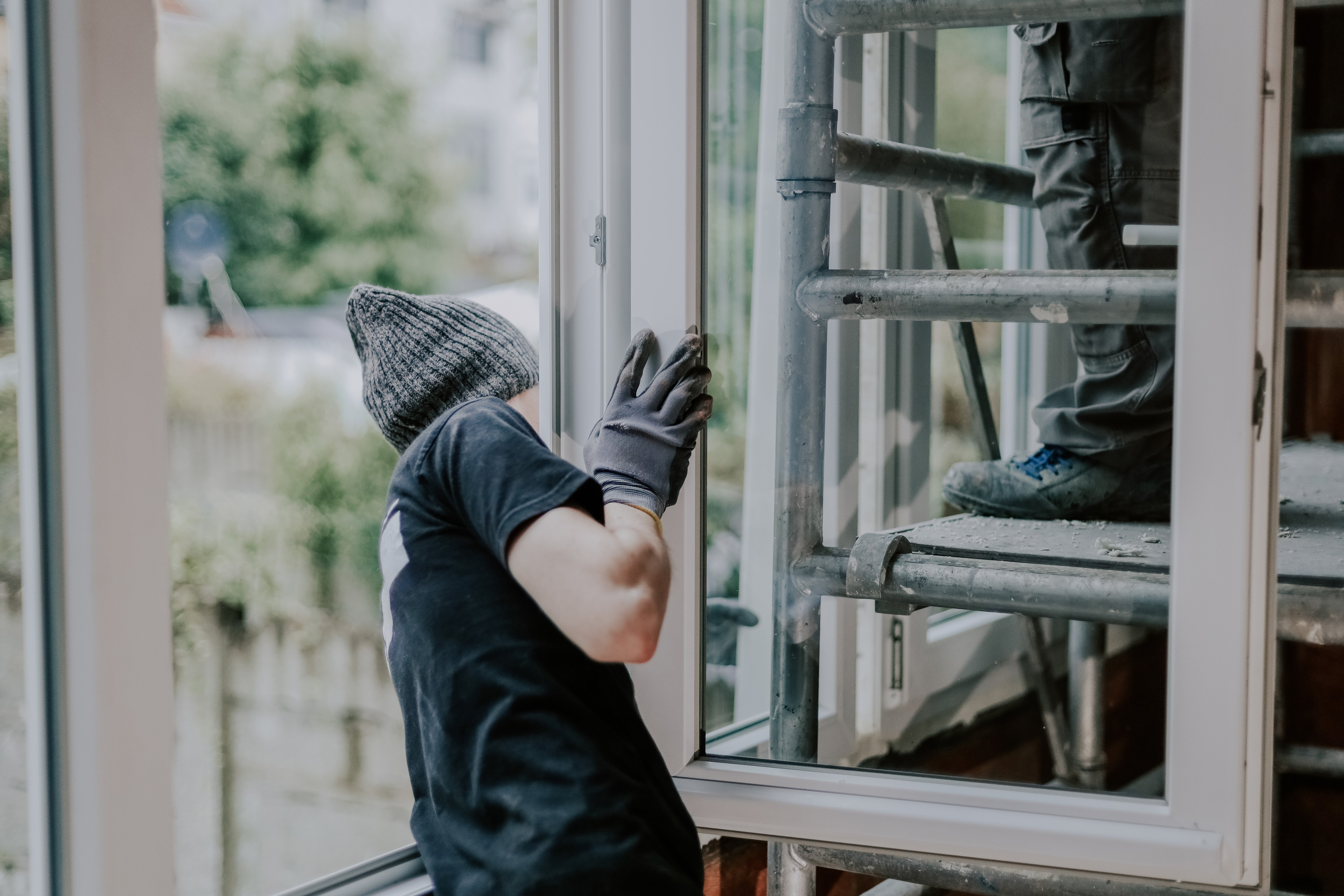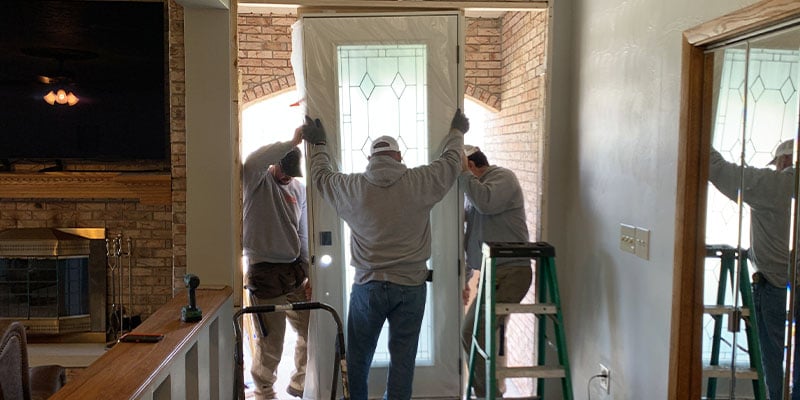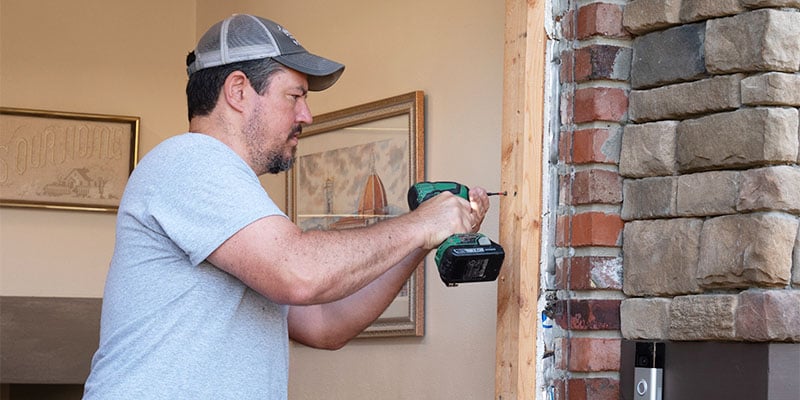Fiberglass vs. Wood Doors: Which Is Right for Your Pittsburgh Home?
September 25th, 2025
6 min read
By Chris Saxton
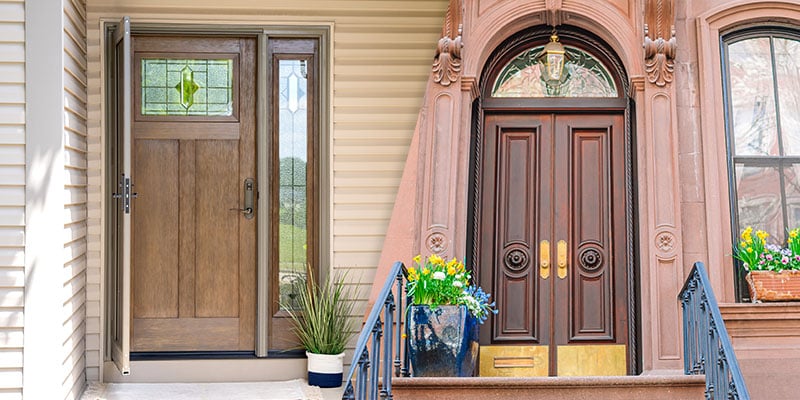
Thinking about replacing your front door, but not sure whether to go with fiberglass or wood for your Pittsburgh home? You're not alone. Many homeowners aren’t aware of how much our local weather impacts the performance and longevity of different door materials.
So how do you choose between the timeless look of wood and the modern performance of fiberglass, especially when they can look nearly identical?
Energy Swing specializes in fiberglass options, but we believe in helping homeowners make the best choice, even if that’s not with us. In this article, we’ll compare fiberglass and wood doors side by side in terms of appearance, durability, maintenance, cost, and more, so you can confidently choose the right door.
You’ll walk away with a clear, side-by-side comparison of these two materials so you can confidently choose the best door for your Pittsburgh home without wasting time or money on something that won’t last.
Fiberglass vs Wood Entry Doors: At-a-Glance Comparison
|
Category |
Fiberglass Door |
Wood Door |
|
Appearance |
Excellent – wood-grain options mimic real wood |
Excellent – authentic grain and craftsmanship |
|
Durability |
Resists warping, rotting, and cracking |
Susceptible to moisture damage, dents, and warping |
|
Maintenance |
Minimal – just occasional cleaning |
High – needs staining, sealing, refinishing |
|
Weather Resistance |
Ideal for Pittsburgh's four seasons |
Expands/contracts with humidity and cold |
|
Cost (Upfront) |
Mid to high |
Low (pine) to High (mahogany/oak) |
|
Long-Term Value |
High – great ROI, lasts decades |
Depends on upkeep and wood type |
|
Security |
Reinforced cores, compatible with upgrades |
Strong but can split, fewer upgrade options |
|
Customization |
High – dual finish options, stains/paints |
High – natural stain or paint options |
What Makes Fiberglass Entry Doors so Popular Today?

Fiberglass doors have grown rapidly in popularity because they strike a balance between beauty, performance, and practicality. Unlike solid wood, they’re engineered to handle the elements without constant upkeep.
-
Construction: Built with a durable fiberglass shell around an insulated foam core, these doors are designed to resist warping, cracking, and rotting.
-
Styles: Available in smooth finishes or realistic wood-grain textures molded from actual wood patterns.
-
Customization: Can be factory-stained or painted in a wide range of colors, with the flexibility to choose different finishes for the interior and exterior sides.
-
Popularity: An estimated 60–70% of homeowners today choose fiberglass largely for its durability and low maintenance, with steel being another popular contender.
This engineered design means homeowners can enjoy the warmth and look of real wood without some of its long-term vulnerabilities.
To understand the comparison, it helps to look at the traditional counterpart—wood doors—and why some homeowners still prefer them.
Why Some Homeowners Still Choose Solid Wood Entry Doors
Wood doors have been the traditional entry choice for centuries. They can be crafted from different species, each with its own strengths and weaknesses.
-
Species matter: Hardwoods like mahogany or oak resist insects and warping better than softwoods like pine.
-
Customization: Natural wood can be stained or painted to match trim or interior finishes.
Who chooses wood: Often, homeowners who love authentic materials or in historic neighborhoods where real wood may be required.

Do Fiberglass Doors Look as Good as Real Wood?
At first glance, wood wins on authenticity as it is the real thing. But modern fiberglass has come a long way. High-quality models use molds taken from real wood, creating a nearly identical look.
-
Wood: Offers the richness of natural grain and the ability to add carvings or detailed craftsmanship.
-
Fiberglass: High-quality models are molded from real wood to capture authentic grain patterns. It can be nearly impossible to tell the difference. Lower-end fiberglass, however, may look less convincing up close.
- Customization: Both can be stained or painted, but fiberglass offers more flexibility with dual finishes (different inside vs outside).
Which Door Handles Pittsburgh’s Weather Better: Fiberglass or Wood?
Our four-season Pittsburgh weather, consisting of hot summers, wet springs, and snowy winters, puts doors to the test.
-
Wood: Expands in humidity and contracts in cold, sometimes causing gaps, cracks, or sticking. That’s why wood tends to perform better in warmer, drier climates like Southern California, where there’s little rain or snow and temperatures stay steady year-round.
-
Fiberglass: Resists moisture, rot, and temperature swings. Even mid-grade fiberglass often outperforms wood in insulation for Pittsburgh’s climate.
Which Door Material Needs Less Maintenance Over Time?
When homeowners are weighing door options, maintenance often becomes the deciding factor. A beautiful entry door isn’t much of a win if it constantly demands time, effort, and money to keep it looking its best.
-
Wood: Requires routine upkeep; staining, sealing, or refinishing every 1–3 years, depending on exposure. One Pittsburgh homeowner reported having to reapply polyurethane to his pine door quarterly just to keep it looking decent.
-
Fiberglass: Higher-end models are fade-resistant and will never need to be refinished in addition to only occasional cleaning with mild soap and warm water. They also often carry a 10-year finish warranty.
For many Pittsburgh homeowners, this difference in maintenance is a turning point. If you enjoy the tradition of caring for natural wood, a solid wood door can be rewarding. But if you’d rather spend your weekends on something other than refinishing, fiberglass may be the more practical choice.
Since maintenance affects costs over time, let’s take a closer look at how fiberglass and wood doors compare in terms of upfront price and long-term value.
What’s the Real Cost Difference Between Wood and Fiberglass Doors?
Prices vary based on grade, design, and species:
|
Material |
Typical Range |
Maintenance Costs |
Long-Term Value |
|
Fiberglass |
Mid- to high-range: $5,000 - $10,000+ |
Minimal |
High ROI |
|
Low-end Wood (pine) |
Lower upfront: $500+ |
High (frequent refinishing) |
Lower |
|
High-end Wood (mahogany, oak) |
High upfront: $6,000+ |
Moderate upkeep |
Moderate–high ROI |
Fiberglass tends to deliver the best balance of long-term savings and performance. But for homeowners who want true hardwood character, the investment in a higher-grade wood species can still be worthwhile.
Is a Fiberglass or Wood Door More Secure for Your Home?

Your front door isn’t just about curb appeal, it’s also your home’s first line of defense. So which material stands up better to threats?
-
Wood: Solid and heavy, but more prone to splitting, especially around the lockset. Traditional construction also limits compatibility with modern locking upgrades.
-
Fiberglass: Often built with reinforced cores and layered materials that resist force, cracking, and warping. Many models support advanced locking systems like multipoint mechanisms that secure the door at several points.
Both doors offer baseline protection, but fiberglass gives Pittsburgh homeowners more options for enhanced, long-term security.
Security is important, but so is longevity. Let’s look at how long you can expect a fiberglass or wood door to last in Pittsburgh’s climate.
Which Door Will Last Longer in Pittsburgh’s Climate?
In a region with snow, rain, humidity, and cold snaps, durability isn’t optional. It’s essential. The lifespan of your door depends heavily on the material, the quality of the product, and how much maintenance you’re willing to commit to.
-
Wood: With regular refinishing, a solid hardwood door (like mahogany or oak) can last decades. But without consistent maintenance, Pittsburgh’s moisture and seasonal swings can lead to warping, rotting, and cracked finishes.
-
Fiberglass: Built to resist moisture and temperature changes, fiberglass doors hold up with minimal upkeep. Many carry a 10-year finish warranty, but the structure often lasts far longer, even in tough conditions.
In Pittsburgh’s climate, fiberglass doors outlast wood with less work, fewer repairs, and more peace of mind. But some homeowners enjoy the upkeep and character that a wooden door gains over time.
How to Choose the Right Entry Door for Your Pittsburgh Home
It really comes down to your priorities. Here’s how to think about it:
-
Choose Wood If… you love the authentic warmth of natural materials and don’t mind regular maintenance.
-
Choose Fiberglass If… you want the look of wood without the upkeep, better insulation for Pittsburgh weather, and long-term durability.
Fiberglass vs. Wood: Which Entry Door Is the Smarter Choice?
Now that you’ve seen how fiberglass and wood doors compare in appearance, durability, maintenance, cost, and more, you have a much clearer understanding of which one fits your home and lifestyle.
If you’ve been frustrated by swelling doors, peeling finishes, or the need for constant refinishing, you’re not alone. These are real concerns for many Pittsburgh homeowners, especially with the impact of four-season weather.
The good news? You can get the timeless look of wood without the hassle. Try our entry door pricing calculator to see what a fiberglass door might cost, or schedule a free consultation to see your options in person.
At Energy Swing, we’ve helped hundreds of homeowners across Pittsburgh upgrade their entry doors with beautiful, low-maintenance fiberglass options. We’re here to help you find the right door that looks great and performs even better.
Frequently Asked Questions About Fiberglass vs. Wood Doors
Are fiberglass doors more expensive than wood doors?
It depends on the grade. Basic wood doors can be cheaper upfront, but higher-end hardwoods often cost more than fiberglass. Over time, fiberglass typically offers better value because it requires less maintenance.
Can fiberglass doors really look like real wood?
Yes. High-quality fiberglass doors are molded from actual wood grain patterns, making them nearly indistinguishable from real wood unless examined up close.
Which type of door is better for Pittsburgh’s climate?
Fiberglass is usually the better fit for Pittsburgh’s four-season weather because it resists swelling, shrinking, and warping. Wood can work if you have a covered entry or are willing to commit to regular upkeep.
Do fiberglass doors require painting or staining?
Most fiberglass doors come factory-finished and don’t need painting or staining for many years. However, they can be refinished later if you want to change the color.
How long do wood doors last compared to fiberglass doors?
A well-maintained wood door can last decades, but it requires regular refinishing. Fiberglass doors can last just as long—or longer—with far less upkeep.
Are wood doors still a good choice for any homeowners?
Yes. Wood remains popular among homeowners who value authenticity, live in historic neighborhoods with restrictions, or simply prefer the natural beauty of real wood.
Chris Saxton is a Client Consultant at Energy Swing Windows and has been with the company since 2001. He is passionate about finding the best solutions for every homeowners project while educating them along the way.
Topics:








.jpg?width=1200&height=550&name=Copy%20of%20Copy%20of%20ESW%20Collage%20Template%20(3).jpg)
